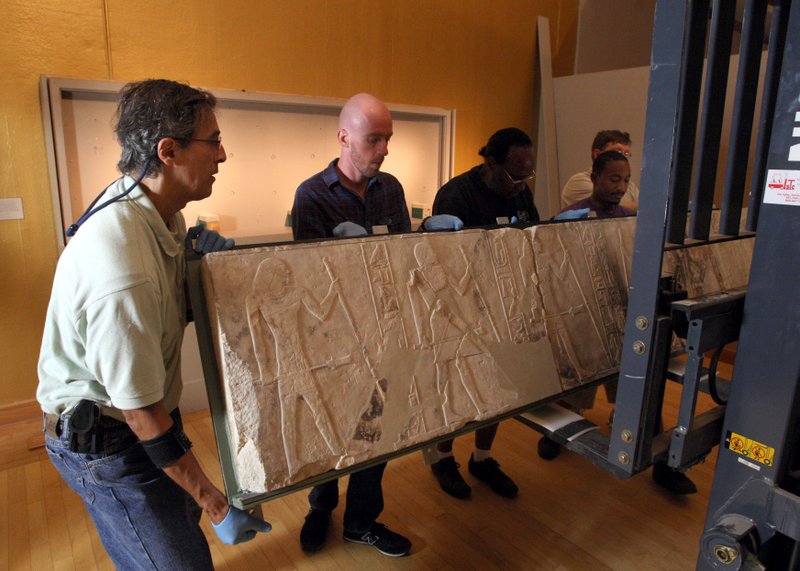LITTLE ROCK — Even though “World of the Pharaohs” proved to be a financial sinkhole for the Arkansas Arts Center, the exhibition’s more than 300 objects retain their immense value as ancient Egyptian artifacts.
Their worth, in some cases beyond pricing, accounts for the tender loving care invested in the five-day process of dismantling and packing the displays after the July 5 closing here for shipment back home to the Museum of Fine Arts, Boston.
Three conservators from the Boston museum came to Little Rock to supervise the Arts Center staff in the meticulous work. A certain poignancy was added to the behind-the-scenes labors due to the traveling exhibit’s forlorn fate - having been spurned at what was meant to be its final touring stop after Little Rock.
In better times, the next destination would have been the Huntsville Museum of Art. But that Alabama institution canceled plans to host “World of the Pharaohs,” citing high costs.
So the artifacts that had been carefully selected a few years ago by curators in Boston to reflect the exhibit’s subtitle, “Treasures of Egypt Revealed,” have been returned to their permanent perches in Massachusetts - except for the two borrowed mummies sent back to museums in Oklahoma and Canada.
The packing process, which began the day after the exhibit closed, involved objects going back nearly to the dawn of Egyptian civilization more than 5,000 years ago and weighing anywhere from mere ounces to 4,500 pounds.
Before being packed, each item was carefully inspected and cross-referenced with archived photos and descriptions to make sure that no visible damage had occurred during the nearly 10 months the exhibition spent in Little Rock.
Overseeing that work was Laura Lipcsei, one of the Boston museum conservators. Lipcsei explained that previous damage on record was being compared with an artifact’s present condition - down to a small circular mark she noted on the derriere of a seated figurine.
Each item small enough to be lifted by hand was removed from its display site by a gloved Boston museum worker, then carried to a padded rolling cart parked as close to the shipping case as possible.
Those smaller objects were placed in trays of archival safes lined with chemically stable foam padding containing cavities cut to hold each item snugly. The trays were eased precisely into custom built wooden crates, which the Boston conservators asked not to be photographed for security reasons.
The heaviest pieces, like the 4,500-pound head of Ramses the Great from a colossal figure sculpted in the 13th century B.C., went untouched by gloved hand or padded forklift. They were mounted on steel and aluminum frames rigged with mounting brackets and forklift slots, then transferred to individually designed crates.
Removal of the Arts Center’s most ambitious visiting exhibition left a half-dozen of the museum’s galleries temporarily empty except for the vacant display cases.
“It’s bittersweet,” said Laura Shafer, an Arts Center curatorial assistant, as the galleries were being emptied. “It’s been a great show, and I really enjoyed the way we had the layout. The whole feel was really quite special, I think.”
Style, Pages 51 on 07/25/2010
